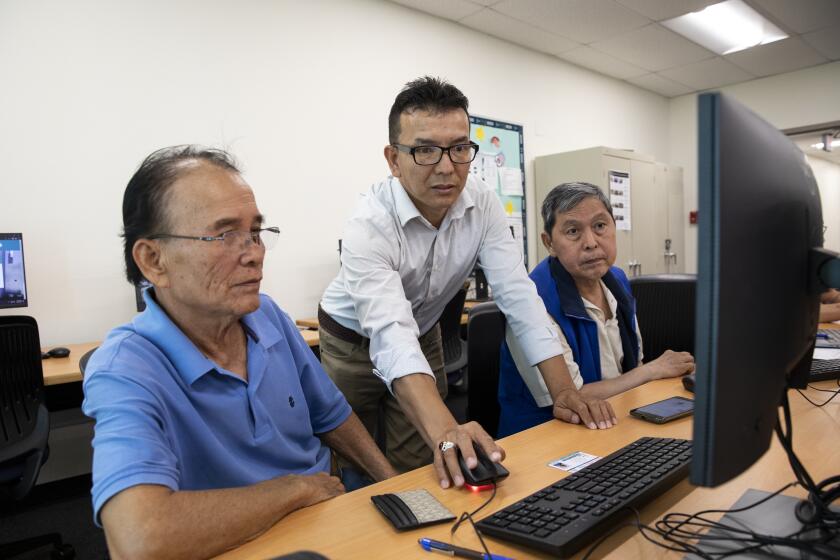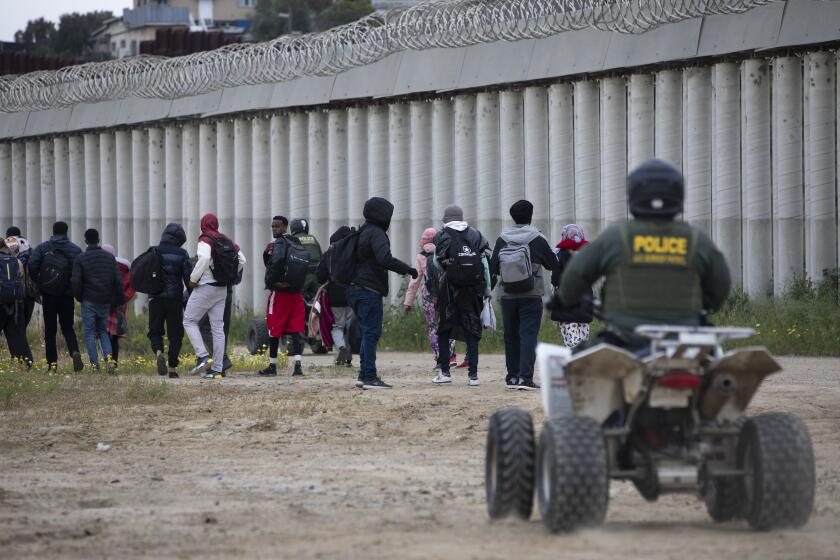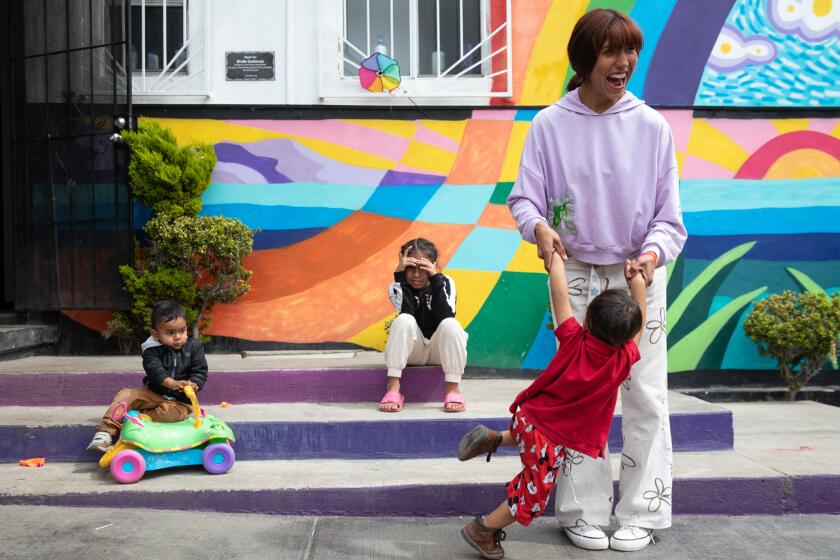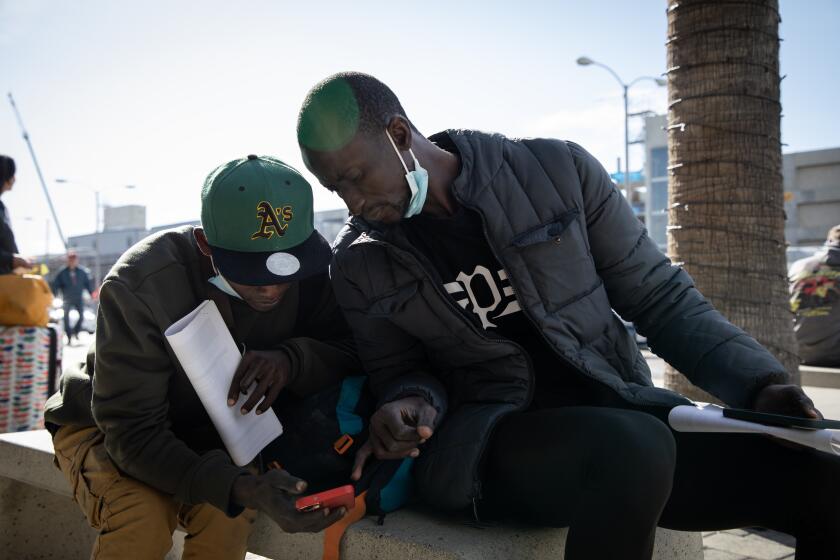New temporary designation protects some Haitians from deportation for now, others left out
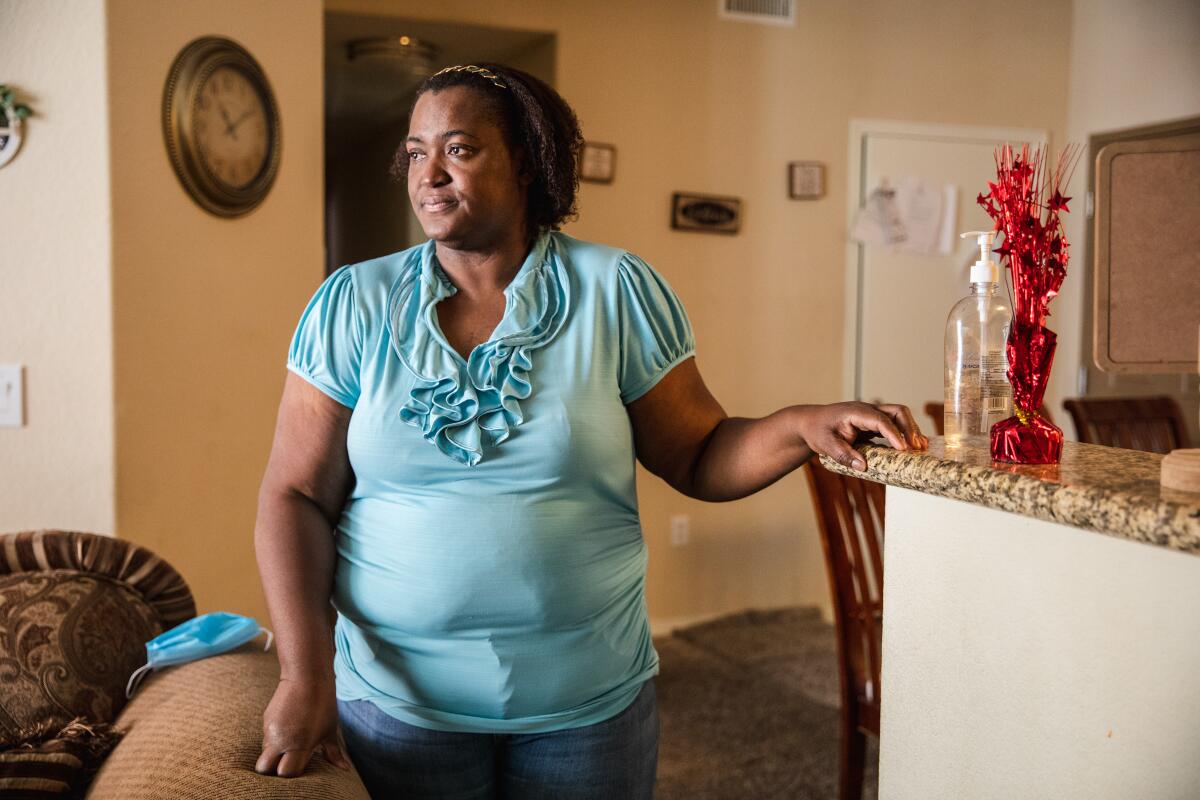
New 18-month reprieve from deportation welcome, but community advocates say more needs to be done to protect those fleeing a country in political and economic upheaval
When Josiane Valsaint found out she would be allowed to stay in the United States for another 18 months, the relief was bittersweet.
Valsaint, 41, has been in San Diego for about 11 years, building a life tenuously on temporary protection from deportation for Haitians that must be reauthorized by the White House every couple of years. The Biden administration recently extended temporary protected status, or TPS, for Haitians for the next year and a half, and is even allowing Haitians who were not already part of the program to join it.
Valsaint is grateful her protection hasn’t run out. But the prospect of continuing to live in limbo is emotionally exhausting.
And, her fears of being eventually forced to leave are worsened by statements from politicians who oppose the program.
“I don’t know what to say. I don’t know where to go. I’ve been traveling, going to DC, LA, Vegas, New York, so many states to advocate to say something, but it’s like it doesn’t matter,” Valsaint said, a mixture of anger and sadness in her voice, during an interview at her home in City Heights. “‘We don’t want to hear you, Josiane.’”
The decision also comes too late for Valsaint’s husband, who was deported under the Trump administration, leaving Valsaint to manage as a single mother of three.
“They say, ‘We care about families,’” Valsaint said. “How about us? You did that to us — why?”
TPS allows the U.S. government to designate countries where it is not safe for people to return because of conditions there such as natural disasters or civil war and to provide people from those countries with temporary permission to remain in the United States and work.
Several countries have had TPS designations for decades — such as Sudan and El Salvador — meaning that people from those countries who were in the U.S. at the time the designation went into effect were allowed to stay for now. People who come to the United States after TPS goes into effect are not eligible for it unless the U.S. government redesignates the country for TPS.
Haiti has had a TPS designation since 2010, when a major earthquake destroyed much of the country. The Obama administration redesignated TPS in 2011, meaning Haitians who were in the United States by then were eligible to apply. No Haitian who came to the United States after 2011 has been able to get TPS until now.
The rules requiring people to be inside the United States when TPS goes into effect, when paired with recent restrictionist immigration and border policies designed to keep asylum seekers outside the country, mean that while the new TPS designation offers protection to many Haitians, others who fled the same conditions are left out.
For years, the United States would not deport people to Haiti unless they had been convicted of certain serious crimes because of the conditions in the country after the 2010 earthquake. That meant that Haitians who came to ports of entry at the southern border were allowed into the U.S. temporarily but would not be protected once the government decided to resume deportation flights.
Valsaint fled Haiti in 2010 in the aftermath of the earthquake. She initially went to Mexico, which offered her a visa and promised support services to help her get settled. But once she arrived, she found there were no support services for her, so she continued on to the United States, where she had family wanting to help her. She was able to apply for the 2011 TPS redesignation.
Valsaint’s husband, who arrived too late for the 2011 redesignation, was paroled into the United States at a port of entry and allowed to stay for years even though he didn’t have TPS. They had known each other back in Haiti as friends and began dating and eventually married after reconnecting in San Diego.
Toward the end of the final year of the Obama administration, increasing numbers of Haitians began coming to the San Diego border from Brazil, where they had been invited to work on projects for the Olympics and the World Cup following the earthquake. In response, immigration officials began deportations to Haiti — despite a major hurricane that hit the island that fall.
The number of removals dramatically increased in the first year of the Trump administration. In 2016, officials sent 310 Haitians back to Haiti, according to data from Immigration and Customs Enforcement. In 2017, they removed 5,578 — an increase of nearly 1,700 percent.
Valsaint’s husband was among those targeted for removal in the early years of the Trump administration. He gave up trying to stay in the United States after his health deteriorated from a year spent inside an immigration detention facility and was deported in 2019. Valsaint still keeps their wedding photo on her coffee table, and her children talk with their father daily.
“Dad, it’s not fair. You left without saying goodbye,” Valsaint said her children tell him.
Immigration attorney Andrew Nietor said that Valsaint’s story is “both unfortunately tragic and common.”
“It also underscores how inconsistent the enforcement has been across the country,” Nietor said. “A lot of it is discretionary based on what city the person happens to live in or what a particular ICE official decides to do with that individual person. And that lack of consistency is itself a big problem and why we need something more permanent.”
During the Trump administration, Haitians continued to arrive at the U.S.-Mexico border, some coming from Brazil or other South American countries and others coming directly from Haiti to Mexico. Many fled the increasingly tense political situation there, where the current president has worked to increase his power over the country and both insecurity and economic struggles continue to escalate.
Trump administration policies intended to restrict access to U.S. soil and the asylum system in particular meant that many of these more recently arriving Haitians were left stranded in Tijuana. The Biden administration has continued some of those policies, most notably a pandemic order known as Title 42 that allows anyone caught crossing the border without permission to be immediately expelled to Mexico or their home countries.
Since President Joe Biden took office, the U.S. government has sent more than 30 flights of Haitians back to their country, according to Guerline Josef of Haitian Bridge Alliance.
“What Title 42 has done is block all of those people from accessing the system that otherwise would have been eligible for TPS. And they got expelled when Haiti was literally burning up,” Josef said of the nation’s growing unrest. “It’s extremely unstable and extremely dangerous.”
Community organizers and advocates who work with Haitian communities across the United States are pushing for Congress to pass a bill that would allow longtime TPS holders to receive green cards. The Supreme Court just made it more difficult for TPS recipients to receive green cards, ruling that anyone who entered the United States without inspection is not eligible to get a green card even if that person marries a U.S. citizen. Only TPS holders who came through official ports of entry are able to get green cards through family sponsorships.
Though Valsaint came through a port of entry, she still cannot get a green card because she doesn’t have anyone to sponsor her.
Valsaint cannot imagine trying to make a life in Haiti now.
“I want to bury those fears,” she said. “It’s like a closet for me, a small closet. I can’t even sit in it. I can’t move. It’s so unfair.”
The length of time that she’s been allowed to live in the United States — more than double what an immigrant with a green card would be required to wait before becoming a U.S. citizen — means that the U.S. is home.
In those 11 years, Valsaint learned English and studied to become first a caregiver and then a nursing assistant. She now works as a doula and community health worker.
Two of her children were born in the United States and are U.S. citizens. Her oldest, now 15, has been here since he was 4. He fled Haiti with Valsaint after the 2010 earthquake that ravaged the country and has been protected from deportation by TPS for most of his life.
His only memory of his home country, Valsaint said, is of being trapped under the debris of his collapsed school building when the earthquake struck. Because of that, he doesn’t even want to go back to visit one day.
Get Essential San Diego, weekday mornings
Get top headlines from the Union-Tribune in your inbox weekday mornings, including top news, local, sports, business, entertainment and opinion.
You may occasionally receive promotional content from the San Diego Union-Tribune.

